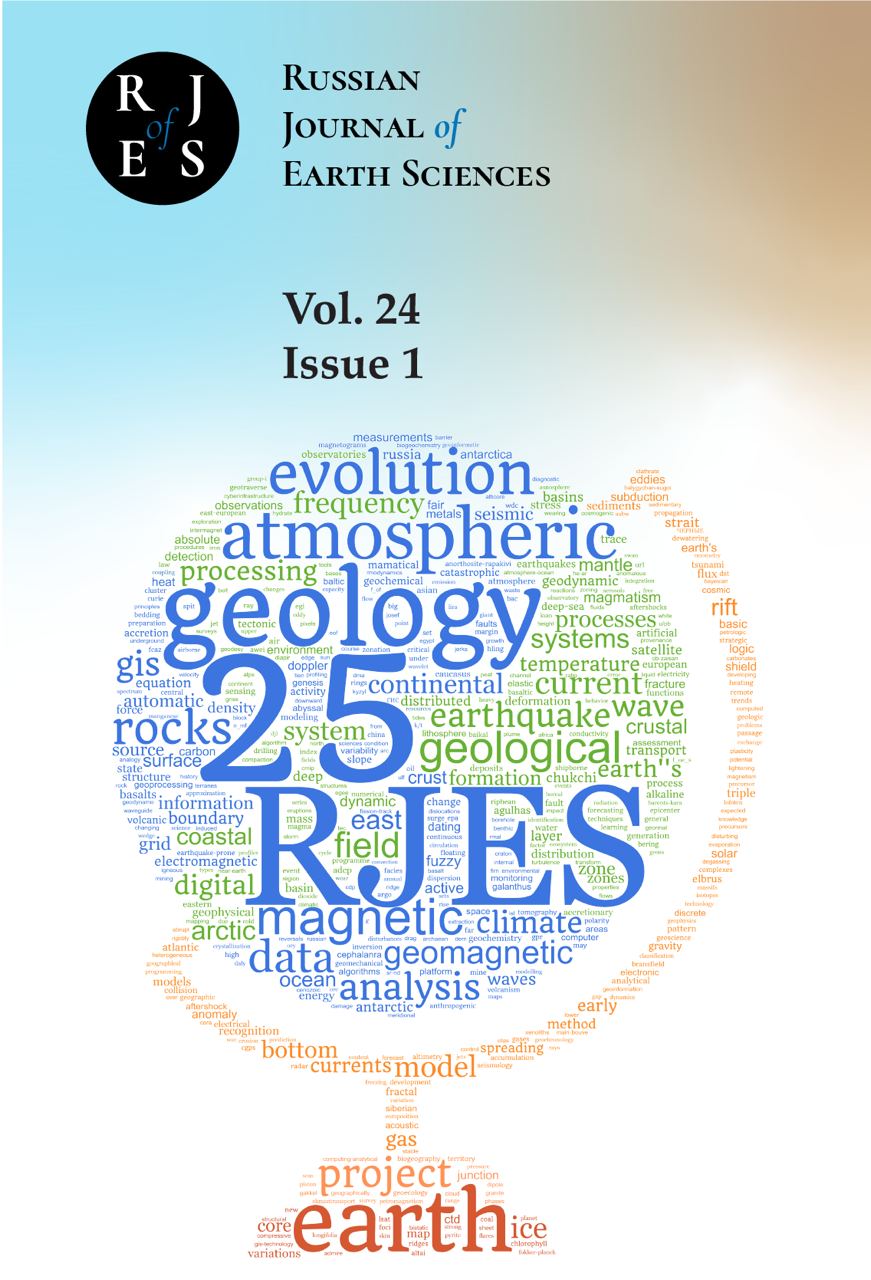Ekaterinburg, Ekaterinburg, Russian Federation
Russian Federation
from 01.01.2010 until now
Ekaterinburg, Russian Federation
from 01.01.2006 until now
Russian Federation
UDC 550.8.055
UDC 55
UDC 550.34
UDC 550.383
CSCSTI 37.01
CSCSTI 37.15
CSCSTI 37.25
CSCSTI 37.31
CSCSTI 38.01
CSCSTI 36.00
CSCSTI 37.00
CSCSTI 38.00
CSCSTI 39.00
CSCSTI 52.00
Russian Classification of Professions by Education 05.00.00
Russian Library and Bibliographic Classification 26
Russian Trade and Bibliographic Classification 63
BISAC SCI SCIENCE
Process of Earth’s density models creation leads to the solution of direct and inverse gravimetry problems. The inverse problem of gravimetry is a classic example of an ill-posed problem: in the common statement, its solution is not unique and unstably depends on input data. Therefore, it is necessary to determine solutions belonging substantial sets of correctness, choosing reasonable models of an initial approximation. In this paper the application of complex interpretation methods of seismic and gravitational data for the creation of three-dimensional models of crust and the upper mantle are presented. Original algorithms and programs were developed for implementation of these methods. They contain solution of non-linear (structural) inverse problem and the solution of the linear three-dimensional inverse problem taking note of the side sources. Coefficients of the “density-velocity” correlation formulas for a number of geo-traverses were defined. Also, we suggest a technique of tectonic maps construction, which is based on the lithostatic pressure calculation. Its idea can be applied to both two- and three-dimensional cases. In the 2D case we show the way to split the mantle to blocks with vertical boundaries. If lithostatic compensation hypothesis is adopted, the method also allows one to calculate density value for each block. Such separation of the mantle helps to diminish discrepancy between model and observed fields. In 3D case we suggest a method, which can be used to construct tectonic structure maps with information about approximate depth and height of each tectonic block.
density crust models, geophysical data interpretation, inverse gravity problems
1. Druzhinin, V. S., A. V. Egorkin, and S. N. Kashubin (1990), New information on the plutonic structure of the Urals and adjoining areas, derived from deep seismic sounding data, Doklady of the Academy of Sciences of the USSR. Earth Science Sections, (315), 67-71.
2. Geng, M., M. Y. Ali, J. Derek Fairhead, S. Pilia, Y. Bouzidi, and B. Barkat (2022), Crustal structure of the United Arab Emirates and northern Oman Mountains from constrained 3D inversion of gravity and magnetic data: The Moho and basement surfaces, Journal of Asian Earth Sciences, 231, https://doi.org/10.1016/j.jseaes.2022.105223.
3. Jiménez-Munt, I., M. Fernàndez, J. Vergés, J. C. Afonso, D. Garcia-Castellanos, and J. Fullea (2010), Lithospheric structure of the Gorringe Bank: Insights into its origin and tectonic evolution: GORRINGE BANK STRUCTURE AND EVOLUTION, Tectonics, 29(5), 1-16, https://doi.org/10.1029/2009TC002458.
4. Ladovskii, I. V., P. S. Martyshko, D. D. Byzov, and V. V. Kolmogorova (2017), On selecting the excess density in gravity modeling of inhomogeneous media, Izvestiya, Physics of the Solid Earth, 53(1), 130-139, https://doi.org/10.1134/S1069351316060057.
5. Li, Y., and Y. Yang (2020), Isostatic state and crustal structure of North China Craton derived from GOCE gravity data, Tectonophysics, 786, https://doi.org/10.1016/j.tecto.2020.228475.
6. Martyshko, P. S., I. V. Ladovskii, and A. G. Tsidaev (2010), Construction of regional geophysical models based on the joint interpretation of gravitaty and seismic data, Izvestiya, Physics of the Solid Earth, 46(11), 931-942, https://doi.org/10.1134/S1069351310110030.
7. Martyshko, P. S., I. V. Ladovskii, and D. D. Byzov (2013), Solution of the gravimetric inverse problem using multidimensional grids, Doklady Earth Sciences, 450(2), 666-671, https://doi.org/10.1134/S1028334X13060172.
8. Martyshko, P. S., I. V. Ladovskiy, and D. D. Byzov (2016), Stable methods of interpretation of gravimetric data, Doklady Earth Sciences, 471(2), 1319-1322, https://doi.org/10.1134/S1028334X16120199.
9. Martyshko, P. S., I. V. Ladovskii, D. D. Byzov, and A. G. Tsidaev (2017), Density block models creation based on isostasy usage, in 17th International Multidisciplinary Scientific Geoconference, SGEM 2017, vol. 17, pp. 85-92, International Multidisciplinary Scientific Geoconference.
10. Satyakumar, A. V., S. Jin, V. M. Tiwari, and S. Xuan (2023), Crustal structure and isostatic compensation beneath the South China Sea using satellite gravity data and its implications for the rifting and magmatic activities, Physics of the Earth and Planetary Interiors, 344, https://doi.org/10.1016/j.pepi.2023.107107.
11. Sobolev, I. D., S. V. Avtoneev, R. P. Belovskaya, T. Y. Petrova, and R. A. Syutkina (1983), Tectonic map of Urals in 1:1000000 scale: explanatory notes (in Russian).
12. Strakhov, V. N., and T. V. Romanyuk (1984), Reconstructing the crustal and upper mantle density from DSS and gravimetry data, Izvestiya Akademii Nauk SSSR, Fizika Zemli, (6), 44-63.
13. Zingerle, P., R. Pail, T. Gruber, and X. Oikonomidou (2020), The combined global gravity field model XGM2019e, Journal of Geodesy, 94(7), https://doi.org/10.1007/s00190-020-01398-0.
















